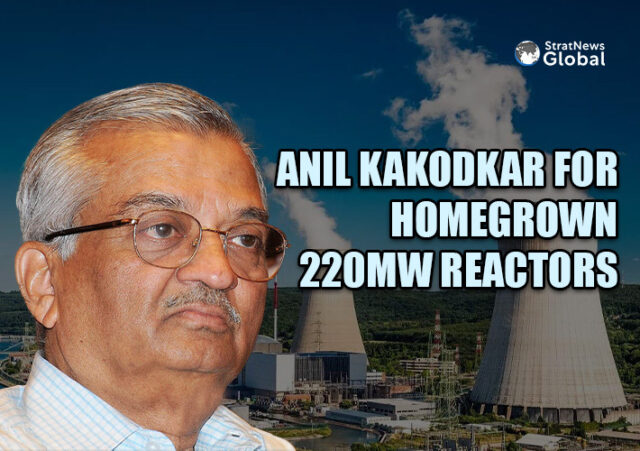Rosatom, Russia’s state-owned atomic energy company, says it is in talks with its Indian counterpart to sell 200MW small modular reactors (SMR). An article in Businessline said Evgeny Pakermanov, chief of Rosatom Overseas, did not give details, only affirming Russia’s expertise in building SMRs, that these offered small building timelines (4 years) and consumed less water.
That India was considering collaborating with foreign countries for SMR technology was confirmed by Jitendra Singh, MoS Science & Technology. Businessline quoted him as telling the Lok Sabha in August last year that while “augmentation of nuclear power capacity through large size reactors” is “a primary goal”, the government is “exploring options of collaborating with other countries” to take up “indigenous development of SMRs”.
StratNews Global spoke to Dr Anil Kakodkar, former chairman of India’s Atomic Energy Commission, who pointed out that SMR expertise was already available in this country.
“The 220MW Indian Pressurised Heavy Water Reactor is a proven design and there are 17 such reactors in operation. These are presently being scaled up,” he said.
Assuming there is a demand for such reactors, Dr Kakodkar says that India needs to “modularize” them in a factory where mass production can take place, which in turn brings scale, lowers cost and helps innovation.
“There are coal-fired plants all over the country nearing the end of their life, and the sites where they are located have assured water supply, are linked to the electricity grid and have rail connections. We could examine the possibility of siting such SMRs in these places taking into consideration issues like safety,” he said.
As for importing foreign reactors whether of the SMR kind or of larger capacity, he noted that despite many years, the French have not been able to set up their reactors here. Nor for that matter the Japanese or any other.
The key issue here is cost, Dr Kakodkar noted. Foreign suppliers are keen on the Indian market and would like to sell here but it becomes unaffordable unless there is 100% value addition done in India.
















